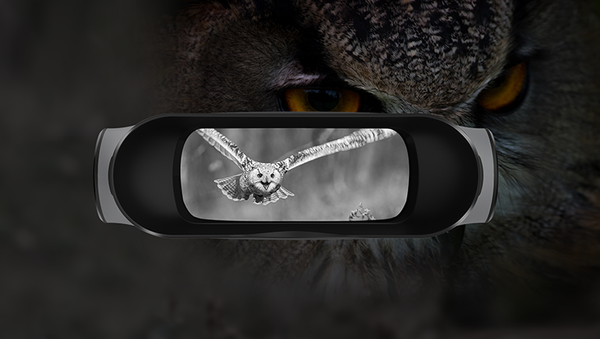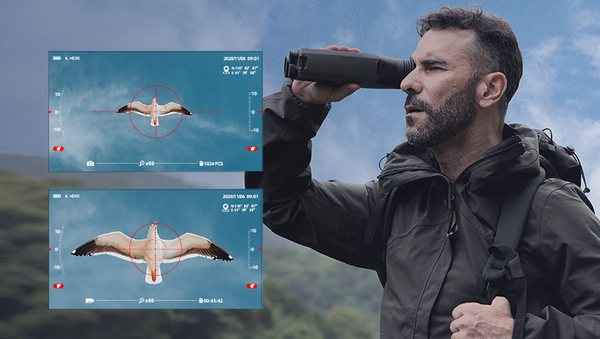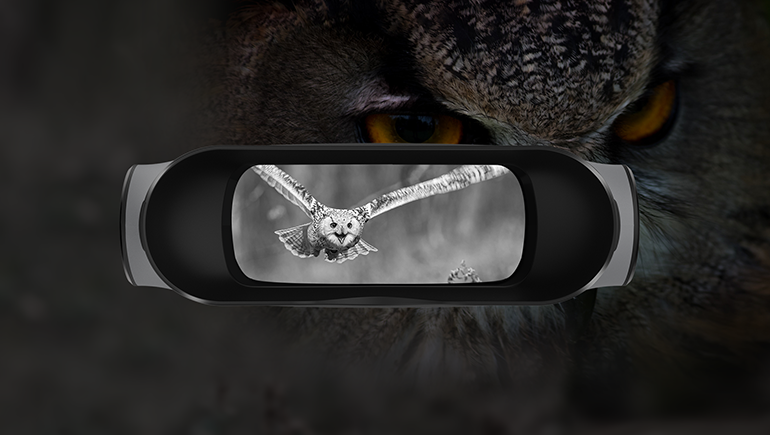We as human beings have limited vision at night compared to various nocturnal animals that can see at night rather than during the day. Whether planning going hunting or on an adventure, you will have a clear vision during the day, but you will only spot just a few species of animals during the night.
We as human beings have limited vision at night compared to nocturnal animals who typically roam around and search for food. To hunt animals at night, you would need night vision optics or thermal imaging to spot your targets. But which of these would be best for night hunting?
What is Night Vision?
You might have night vision, but are primarily associated with the military. Night vision devices are an example of tactical optics that work similarly to a standard camera, but with an advanced magnification and resolution. It allows you to see things in a low-light or picth black scenarios where it takes any surrounding light and make it visible for your eyes.
Night vision absorbs any visible light being reflected by the objects, and the light is then magnified and presented as greenish images. Night vision absorbs any light being reflected by animals at night, from stars, the moon, or distant light. It will then aid you in seeing animals during hunting.
The advantages of night vision are that night vision scopes weigh less, making them more portable in rough jungle conditions; they are cheap and come in various variants.
What is Thermal Imaging?
It uses heat scanners to detect temperature radiation from objects presented as images in different colors. The colors of the images depend on the level of heat signatures of the target and the type of thermal imaging device you are using.
When hunting, the device employs infrared scanners that detect higher temperatures of animals compared to surrounding objects such as vegetation with low heat levels.
Thermal imaging has various advantages: it does not require any light to work; it is suitable in harsh weather like fog, where night vision scopes are limited, and with a more extended range.
Night Vision vs. Thermal Imaging –Which Should You Use for Hunting?

Night vision and thermal imaging vary in various ways, from how they work to their performances under certain conditions. It is essential to understand how the two works for you to make a better decision when deciding which one to use.
When choosing one, consider various factors like the condition in the field, size, and behavior of animals like camouflages that are not easy to see with night vision. You may consider choosing which is best for hunting by answering these questions.
What kind of environment is your hunting ground?
It is a significant factor to consider as the two tactical optics work differently in various environments.
Night vision uses light to work; hence can be affected by fog or dust storms compared to thermal imaging, which uses temperature detectors to form images. Thermal imaging will be a better hunting option in areas with little light, but struggle under extreme heat conditions.
What do you need to identify your game?
Night vision will better identify your game in areas with substantial light. Thermal imaging makes it a bit difficult to locate the type of game, but if you are a pro and know the body structure of various games, it won't be a challenge for you.
What is your budget?
Depending on your budget, night vision is a bit affordable compared to thermal imaging devices. But if you are after a specific type of either night vision or thermal imaging, both categories have different models with different prices and features.
Which is best for night hunting?
It is clear from the above differences that thermal imaging is superior and more advantageous for night hunting with various advantages such as the ability to work without light, identify objects from a further distance and work under adverse weather.
Mileseey NV30 Handheld HD Infrared Night Vision

The Mileseey NV30 handheld HD infrared night vision is unique for combining rangefinder, thermal imaging, and one-of-its-kind infrared night vision. It saves its users the worries of carrying along several devices for various uses while they can find all those uses in a single device.
The Mileseey NV30 night vision is enabled with superior optical zoom and infrared lights that are easy to adjust. It also has a focus and aperture adjustment.
Features of Milessey NV30 Handheld Infrared Night Vision
1. High clarity in the darkness
The Mileseey NV30 has infrared light that ensures high clarity in extreme darkness. This device makes it easy to enjoy various sceneries and sightseeing at night. You can see clearly to a range of up to 500m under the moonlight. With this device, you are assured of breathtaking views at night and a memorable adventure experience.
2. 0-60X digital zooming rangefinder
One of the best features of this device is the rangefinder with a 0-60x digital zoom. With this one-of-a-kind zooming capability, you can observe objects in detail from a distance. It is a modern technological marvel that the traditional rangefinders are nowhere near with 8x zooming abilities.
3. HD Recording
You don't view and forget; with the NV30, you can record for future reference. It offers an HD recording of up to 1080p and records videos are 1920*1080 high definition and photos of 2560*1440 high pixels. It is an upgrade from the 720p devices available on the market.
Frequently Asked Questions (FAQs)
Can you see through fog/smoke with night vision or thermal imaging?
Night vision is slightly limited in fog/smoke offering images that are not clear or no images at all depending on the intensity of fog/smoke. Thermal imaging can see through fog and smoke. But specific objects might be challenging if the smoke is from a vast fire source.
Is night vision or thermal imaging better for coyote hunting?
Night vision utilizes light from objects, while Thermal imaging uses infrared heat detectors to create images. Coyotes radiate heat making them easy to detect with thermal imaging devices. Night vision also requires you to be at a slightly close distance for better vision which might pose a risk.
How long does a night vision rangefinder last?
Depending on your night vision rangefinder models, they are likely to last between 208 - 500 days of continuous use. That is an average of a couple of years, as you are less likely to use it daily.
Wrapping It Up
Hunting at night is not a walk in the park; you must choose the most appropriate tactical optics for successful hunting. It is essential to understand how the two works for you to make a better decision when deciding which one to use. Choose a device that best meets your purpose or needs, the environment you will be hunting in, weather fogy, mountains, and the risks there.
Mileseey is one of the best and most reliable brands if you are after efficient laser hunting rangefinders and night vision equipment.
Related blogs from Mileseey
How to Use a Rangefinder for Hunting
Top 5 Reasons Why You Should Choose Mileseey Digital Night Vision
How to Choose Your Best Digital Night Vision?
Be the first to know the latest updates, tips, how-tos, exclusive deals, and discounts from Mileseey. Sign up for our newsletter today!

